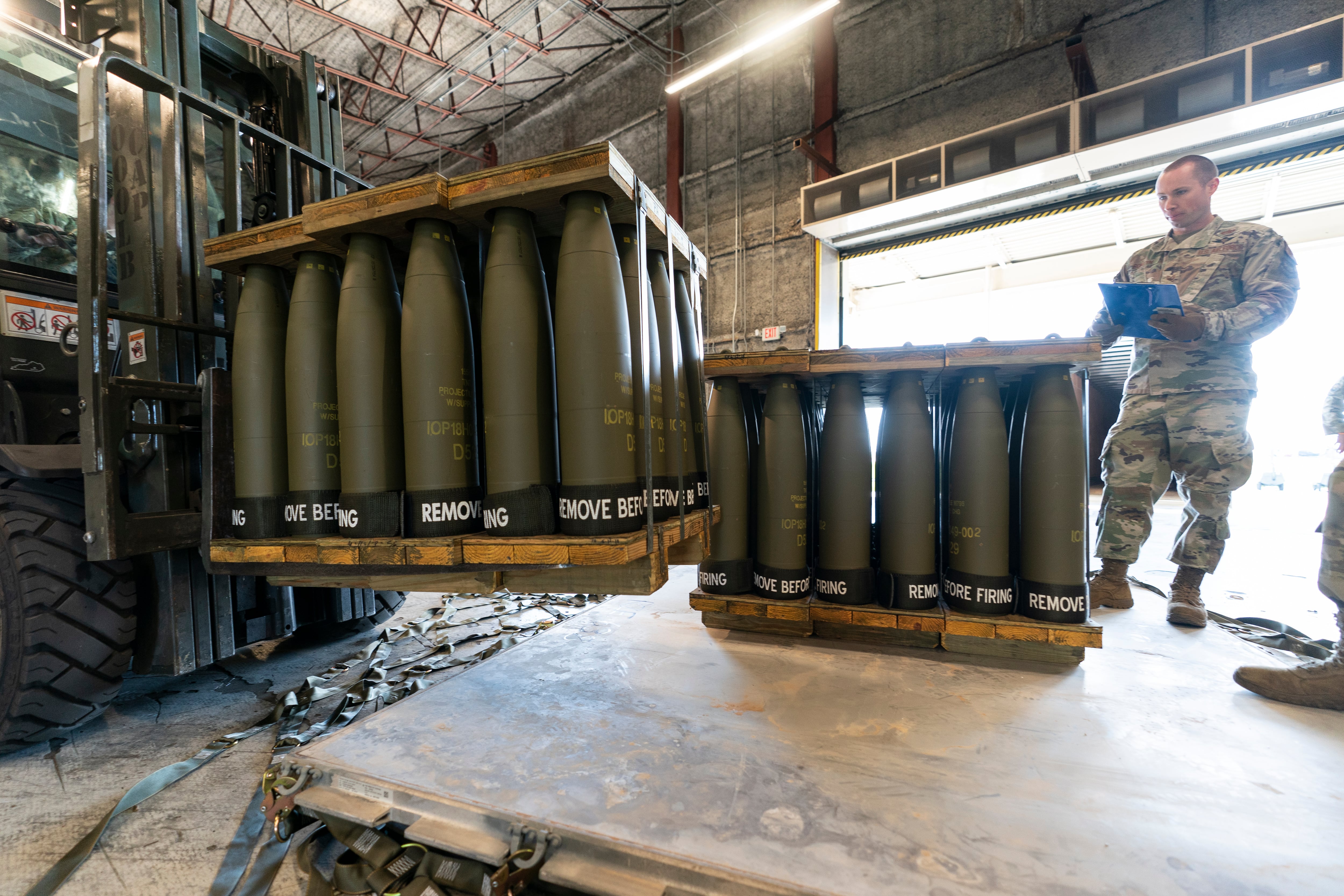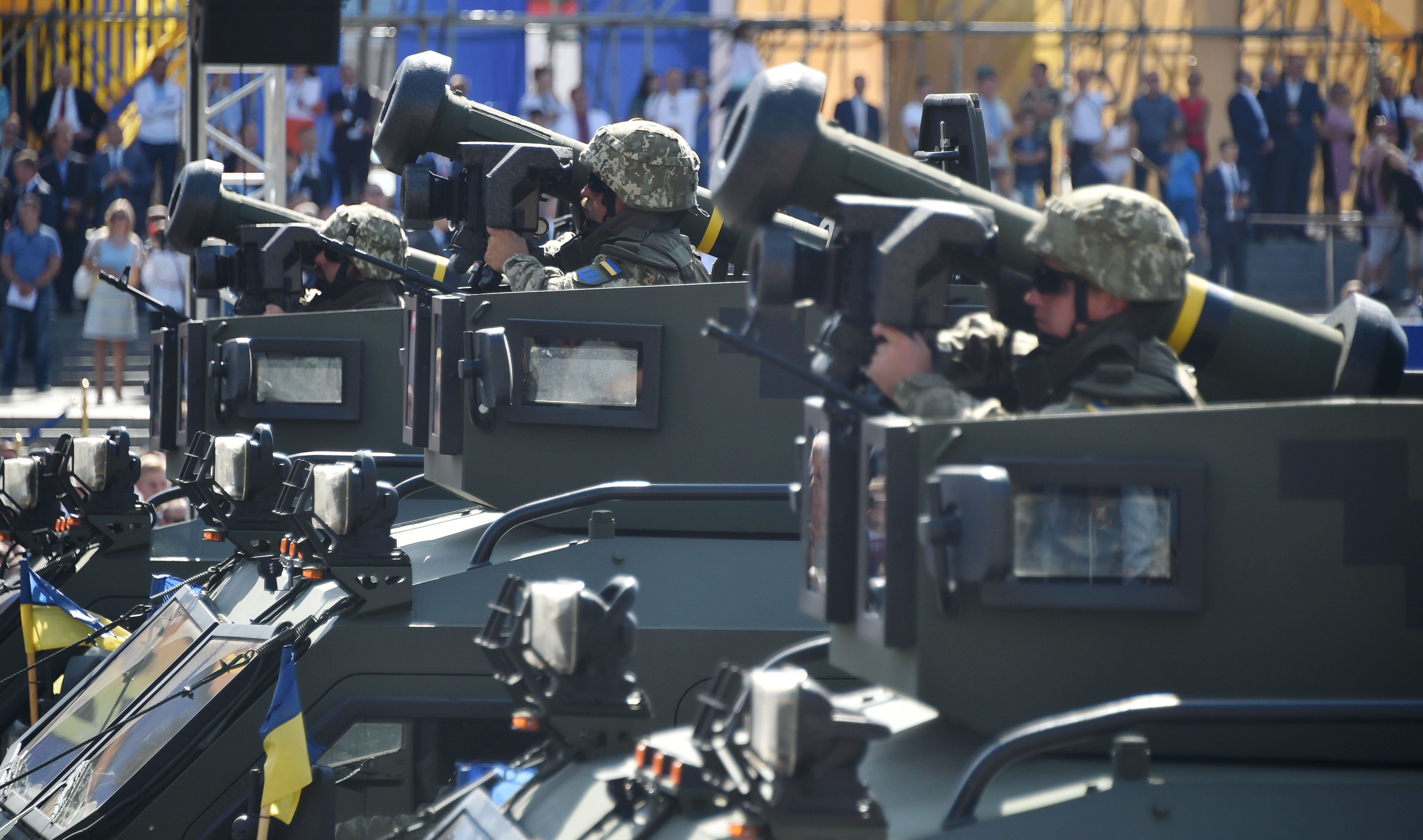WASHINGTON ― Lockheed Martin aims to nearly double production for Javelin anti-tank missiles from 2,100 to 4,000 per year, but it needs the supply chain to “crank up,” according to its chief executive.
As the U.S. sends Javelins from its own military stockpiles to Ukraine’s fight against Russia, Lockheed is boosting Javelin production ― but getting to its goal could take as long as a couple of years, Jim Taiclet said Sunday on CBS’s “Face the Nation.”
“We’re endeavoring to take that up to 4,000 per year, and that will take a number of months, maybe even a couple of years to get there because we have to get our supply chain to also crank up,” Taiclet said. “We think we can almost double the capacity in a reasonable amount of time.”
Congress can help by passing the Bipartisan Innovation Act to invest in domestic design, manufacturing and testing of microprocessors, to reduce reliance on foreign supplies, Taiclet said. Each Javelin contains 250 microprocessors, and Lockheed more broadly is collaborating with chipmaker Intel, he added.
Lockheed, Taiclet said, plans to expand the Troy, Ala., plant where it makes the Javelin with Raytheon Technologies. U.S. President Joe Biden visited the plant last week, and asked Congress to pass his proposed $33 billion Ukraine-related aid package.
Taiclet’s comments came after the Pentagon announced Friday the Army awarded the Lockheed-Raytheon joint venture a $239 million contract modification for the Javelin, with work due to be performed in Tucson, Ariz., and completed in late 2025. The contract, which dates to 2019, has a ceiling of about $2.2 billion.
Taiclet told CBS Lockheed is anticipating increased demand from the U.S. and its allies for advanced systems like cruise missiles, air defenses and fighter jets due to threats from Russia and China. The company will be hiring more workers for its production lines in Texas and elsewhere, he said.
“We’re planning for the long run, and not just in the Javelin, because ... the Ukrainian conflict has highlighted ... that we need to have superior systems in large enough numbers,” Taiclet said.
RELATED

Several U.S. lawmakers have expressed concern at what they see as diminished supplies of U.S. weapons sent to Ukraine. The roughly 5,000 Javelin missiles the Biden administration has sent to Ukraine amount to one-third of the U.S. stockpiles and that the 1,400 Stinger anti-aircraft missiles sent to Ukraine represent a quarter of U.S. stockpiles, they’ve said.
On Friday, the Pentagon acknowledged it has shifted $1.45 billion to the Army and Marine Corps to restock Javelins and Stingers. The transfer sent the Army roughly $809 million for Javelins and $303 million for Stingers and sent the Marine Corps $370 million for Stingers, according to the Pentagon comptroller’s request to Congress.
The money came from the $13.6 billion Ukraine aid package Congress passed in March, which included $3.5 billion to backfill U.S. military weapons sent to Ukraine.
Undersecretary of Defense for Acquisition and Sustainment Bill LaPlante told reporters last week that although the Pentagon had been buying the F-model Javelin, its stockpiles will be refilled with the newer G-model.
LaPlante also said the Army is “actively negotiating” a Stinger contract, which he expected to be complete by the end of the month.
Raytheon, which makes Stingers, may not be able to make more until at least 2023 due to parts and material shortages, CEO Greg Hayes said during the company’s quarterly earnings call last month.
Joe Gould was the senior Pentagon reporter for Defense News, covering the intersection of national security policy, politics and the defense industry. He had previously served as Congress reporter.




